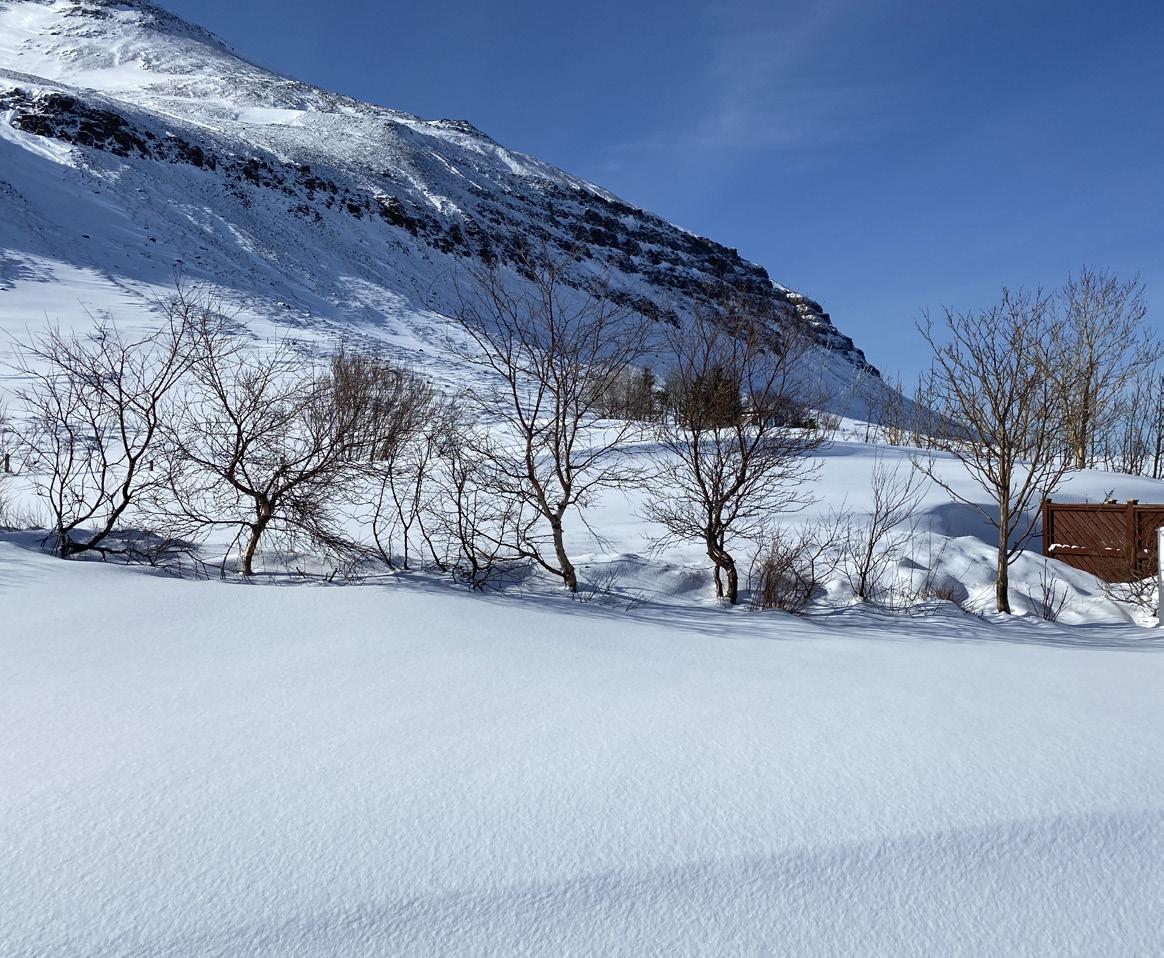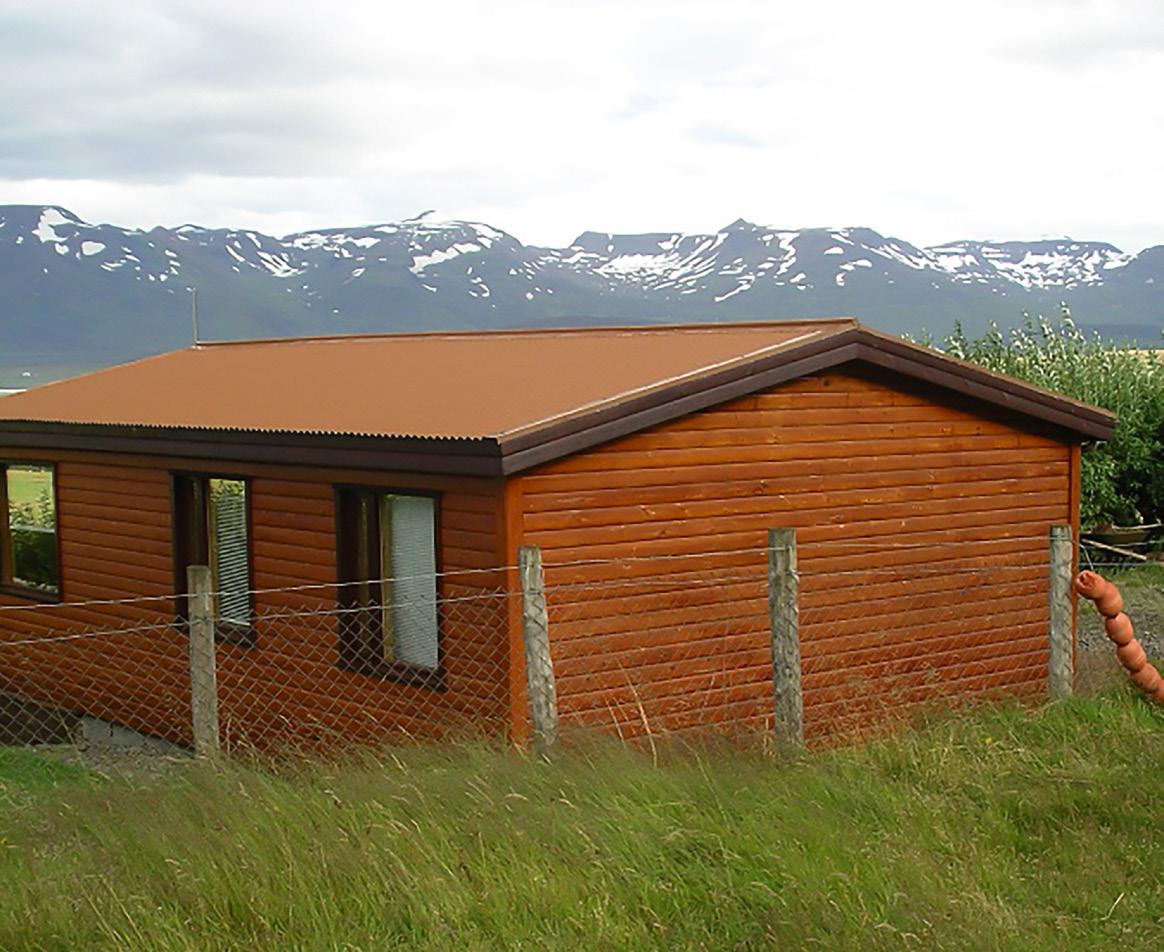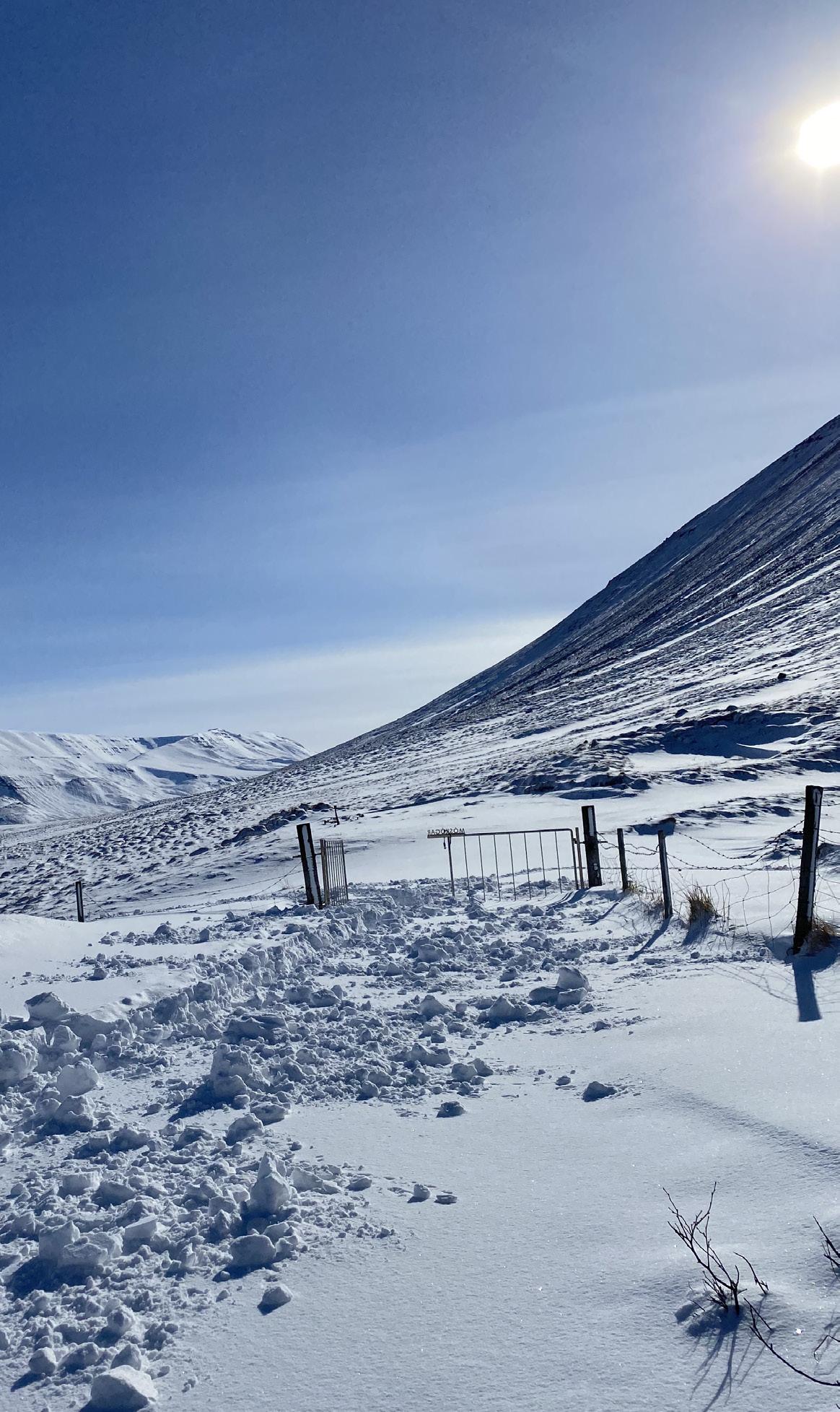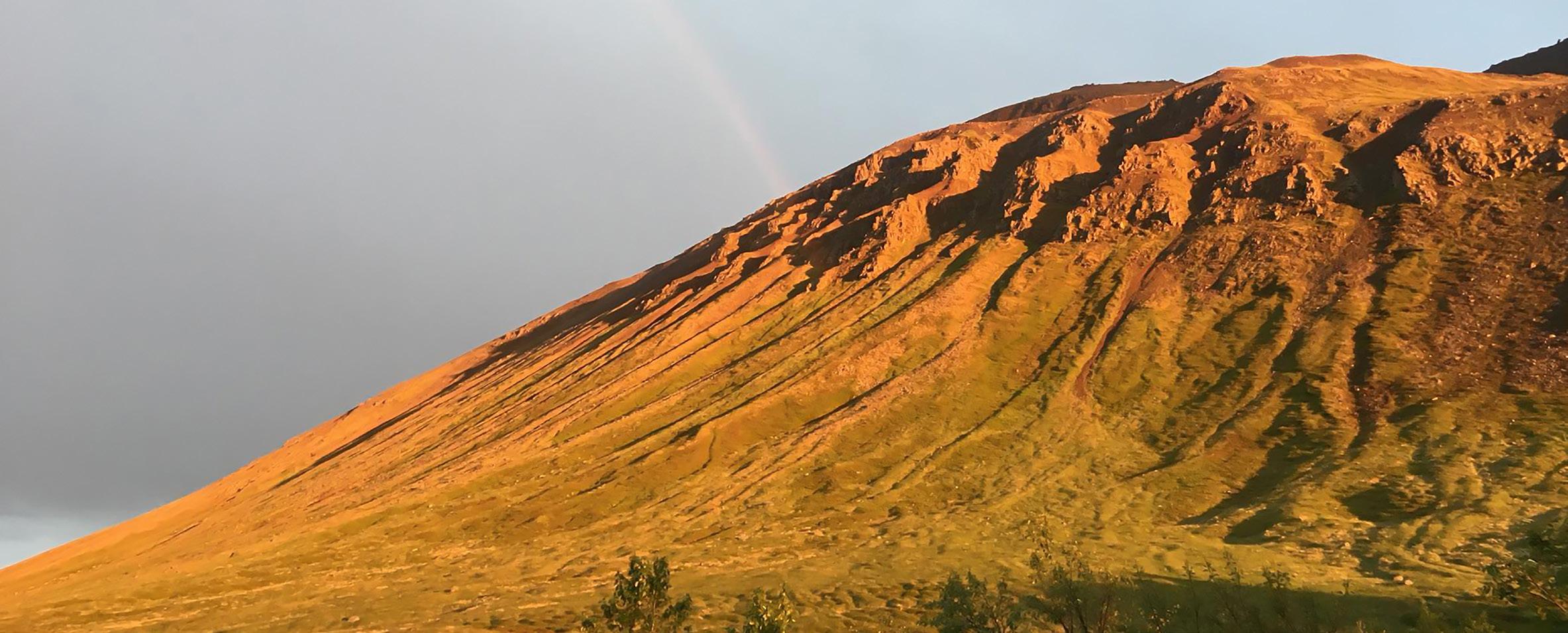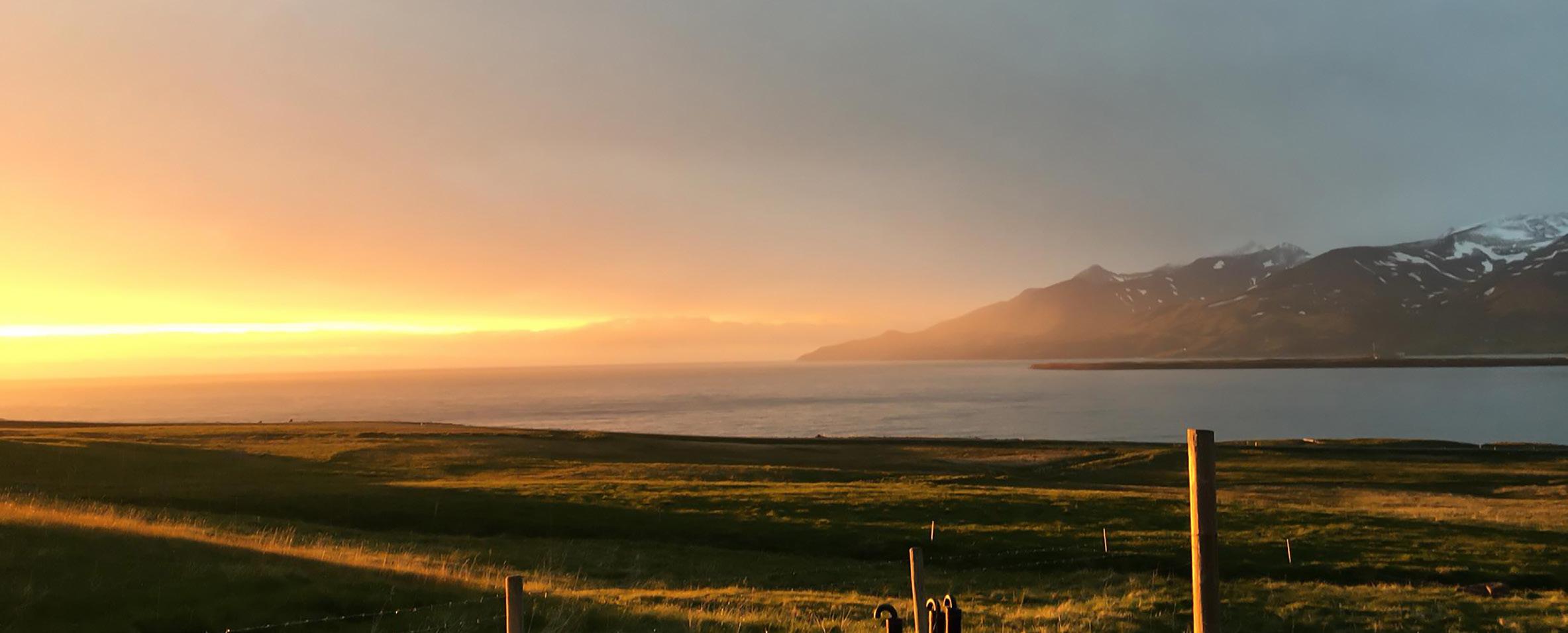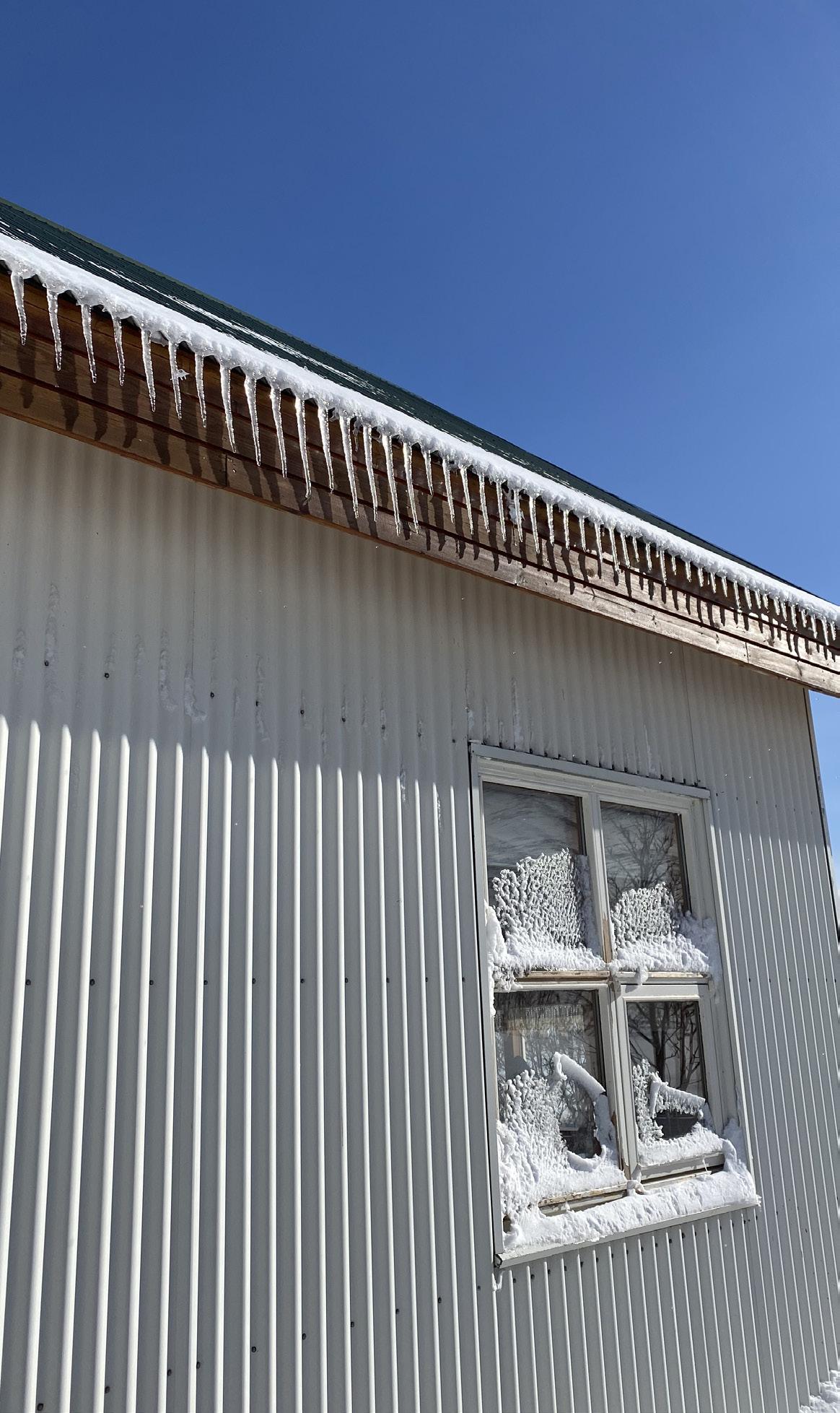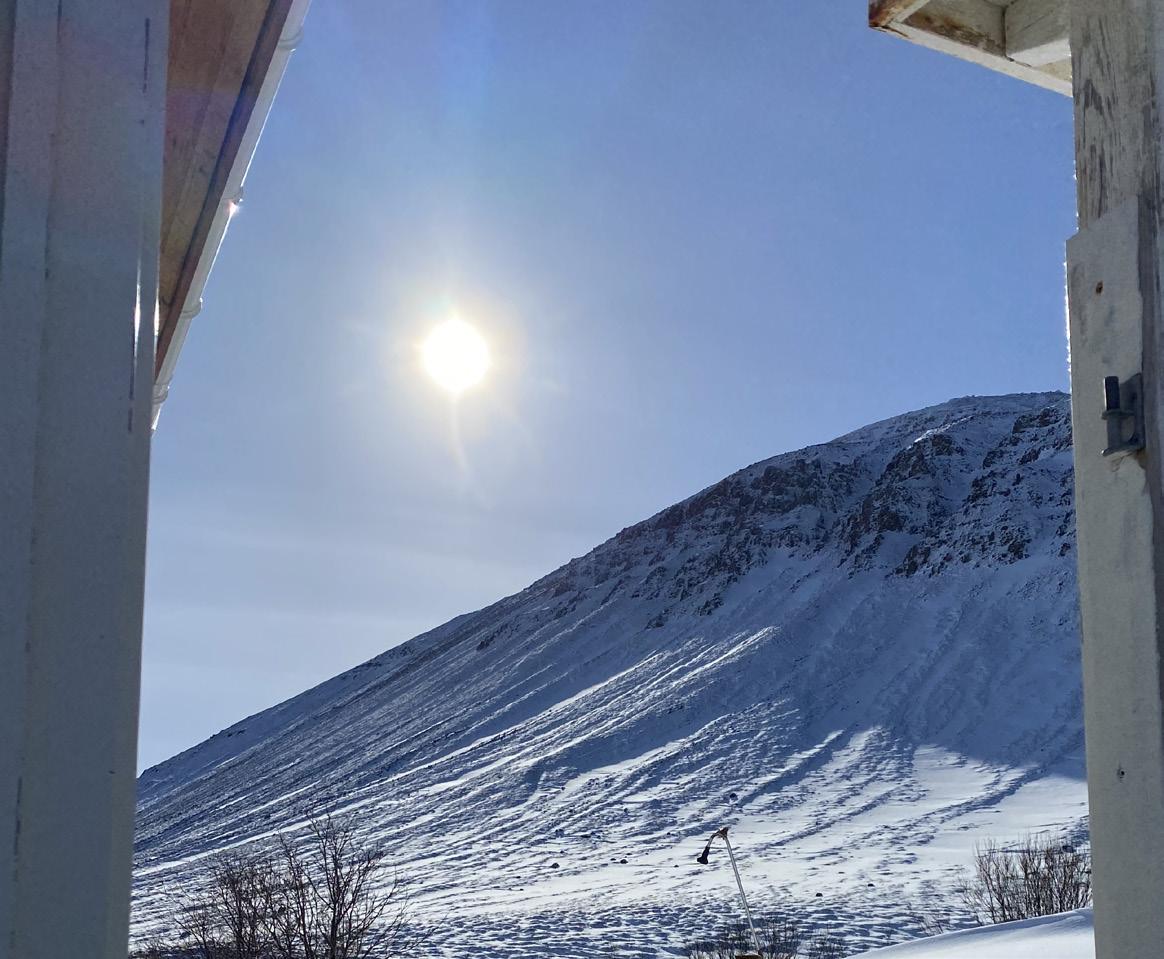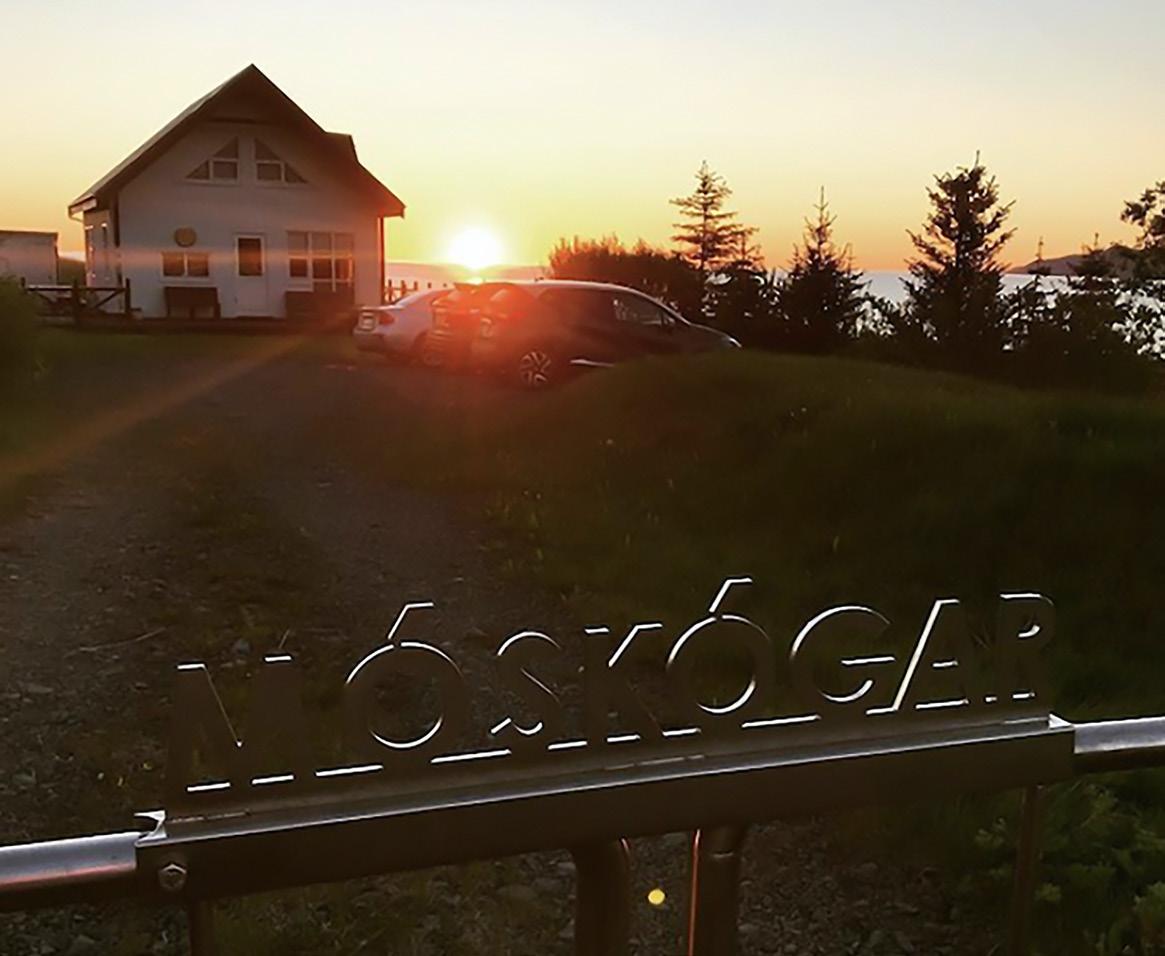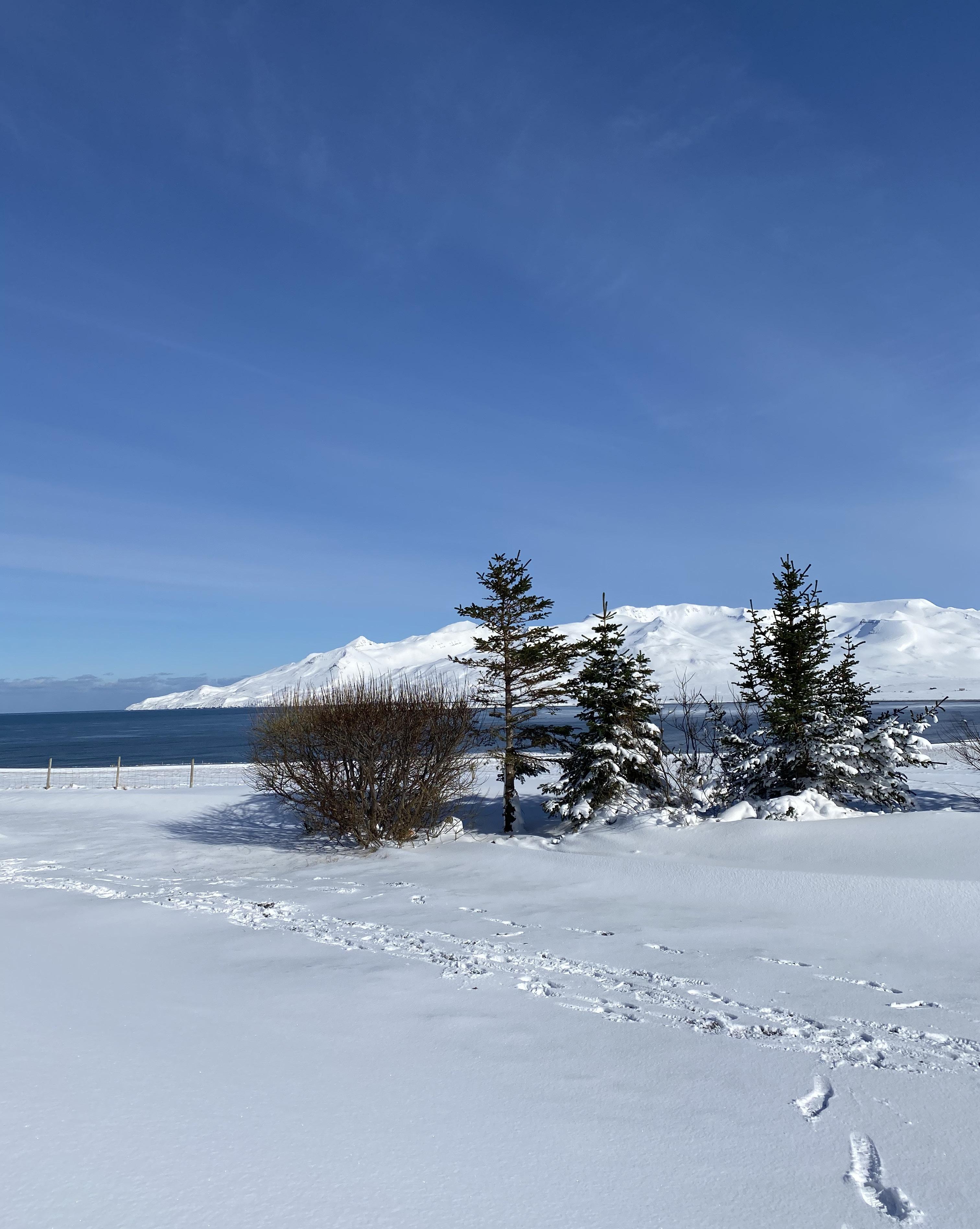
2 minute read
Nature in Fljótin
from Móskógar
Fljótin are a part of the northernmost part of Iceland and nature and climate reflect on that geographical position. Fljótin is not a big fjord but they are divided into two areas in regards to snow and wind. From the beginning of inhabit, inhabitants of Fljótin have always talked about East-Fljót and West-Fljót and is that the definition that is still used to this day. The reason being that East-Fljót cover more mountain area and therefore catch a lot of snow. There is less snow to be found in West-Fljót and the snow disappears more quickly. Fljótin overall has hard winters and inhabitants have always said that the snow fully disappears around the 17th of June. The summers are always very pleasant, not a lot of wind or rain but that has not affected farming in any wasy since soil is always wet after the massive amount of snow. These weather conditions have made inhabit at Fljótin possible.
Nature is vivid and especially in the summertime, a lot of birds, both shorebirds and moorland birds and in Fljótin is one of the biggest Arctic Tern rookery of Iceland. The rookery in Fljótin has through the ages been a great source of down used for duvets and other necessities. In Fljótin you can find a prosperous fishing area where cod can be caught easily. There are three beautiful bodies of water named Miklavatn, Hópsvatn and Flókadalsvatn where both salmon and trout can be caught. In the fall, the hills are covered in berries you can pick, they grow both blueberries and crowberries. In Fljótin you can also find a lot of streams and rivers. In two of the, Brúnastaðará and Nesá, you can find beautiful waterfalls and there is nothing better than walking along the rivers and waterfalls listening to the water flowing, birds singing and sheep bleating. Enjoying the creation of the nature, that’s where the wonders of mankind and nature become one.
Advertisement
Since Fljótin are located this far North on the globe there is a big difference in daylight hours. The winters are dark and long, it gets bright late in the morning and gets dark again early in the afternoon. The summers on the other hand are bright all hours of the day and the sun never sets. There is nothing more beautiful than a summer night in Fljótin.
